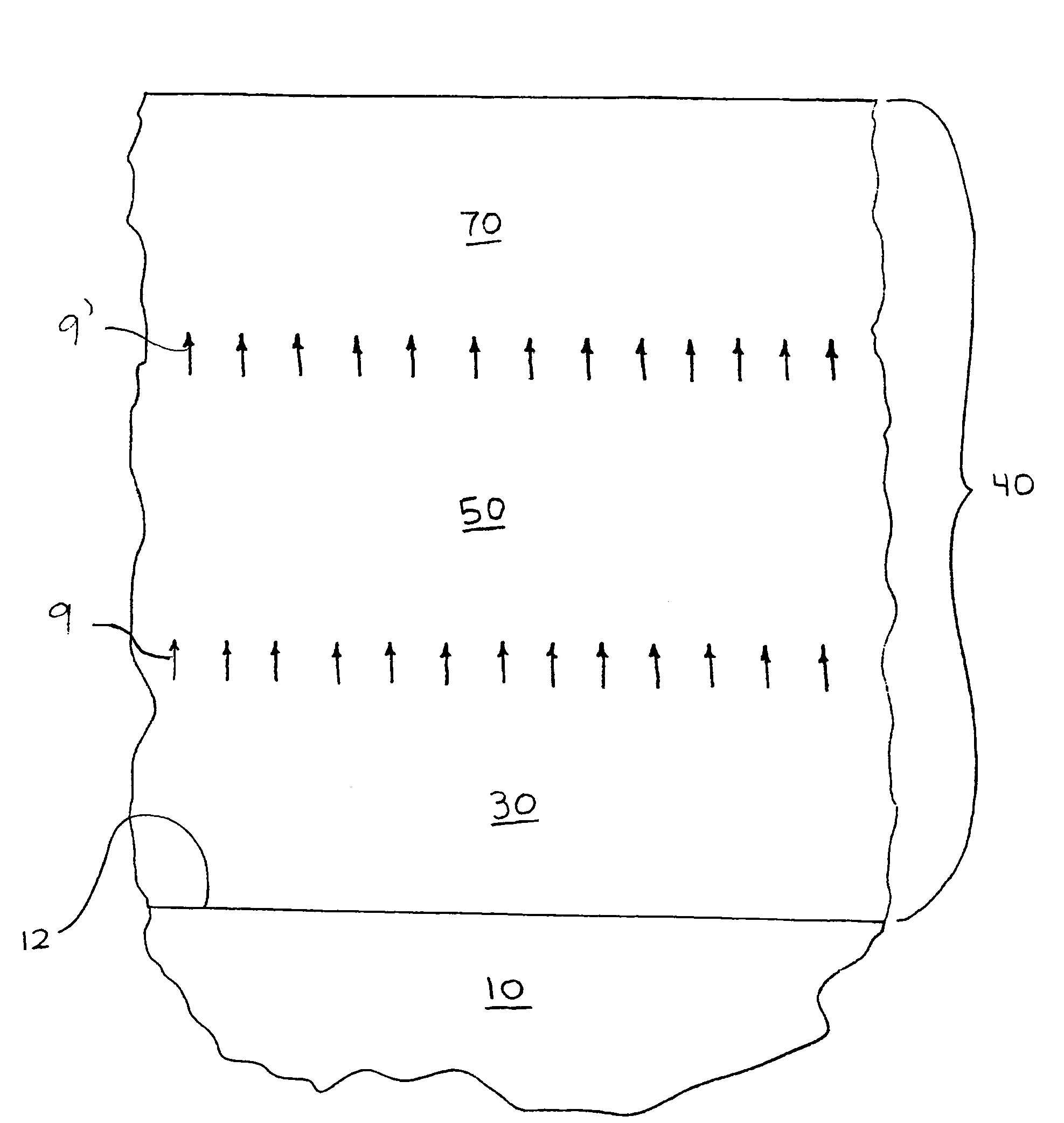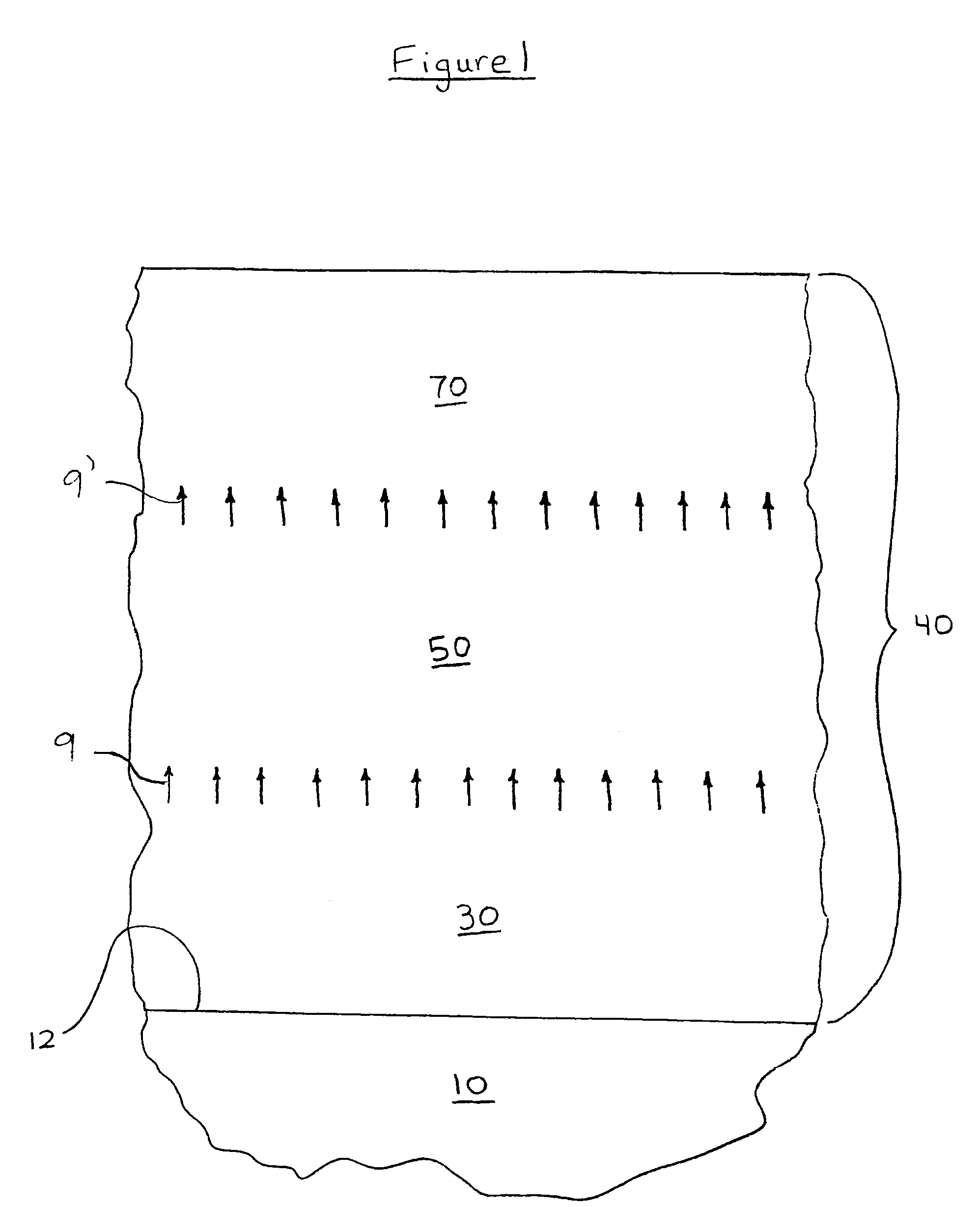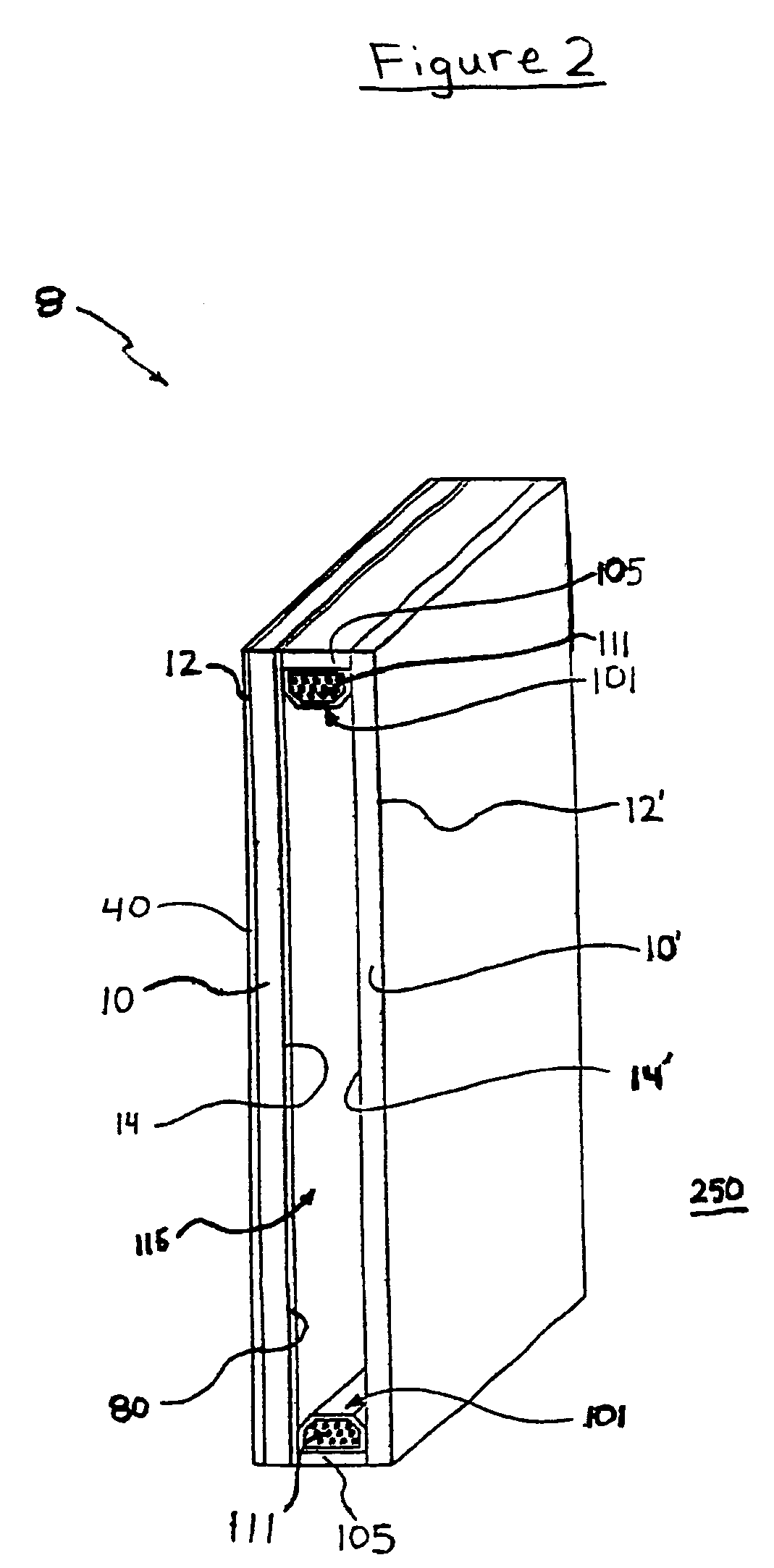Graded photocatalytic coatings
a photocatalytic coating and photocatalytic technology, applied in the field of coatings, can solve the problems of a large number of windows being burdened, and a large amount of time and expense for window washers to regularly clean all the windows of modern glass towers
- Summary
- Abstract
- Description
- Claims
- Application Information
AI Technical Summary
Benefits of technology
Problems solved by technology
Method used
Image
Examples
Embodiment Construction
[0031]The following detailed description is to be read with reference to the drawings, in which like elements in different drawings have like reference numerals. The drawings, which are not necessarily to scale, depict selected embodiments and are not intended to limit the scope of the invention. Skilled artisans will recognize that the examples provided herein have many useful alternatives that fall within the scope of the invention.
[0032]The present invention provides a graded photocatalytic coating. The coating comprises photocatalytic film and includes at least one graded film region having a composition that transitions, with increasing distance from the substrate, from one transparent dielectric material to another. That is, the transition occurs as a function of film thickness. Preferably, in each graded film region, the concentration of one transparent dielectric material decreases gradually as the concentration of another transparent dielectric material increases gradually....
PUM
| Property | Measurement | Unit |
|---|---|---|
| surface roughness | aaaaa | aaaaa |
| total thickness | aaaaa | aaaaa |
| total thickness | aaaaa | aaaaa |
Abstract
Description
Claims
Application Information
 Login to View More
Login to View More - R&D
- Intellectual Property
- Life Sciences
- Materials
- Tech Scout
- Unparalleled Data Quality
- Higher Quality Content
- 60% Fewer Hallucinations
Browse by: Latest US Patents, China's latest patents, Technical Efficacy Thesaurus, Application Domain, Technology Topic, Popular Technical Reports.
© 2025 PatSnap. All rights reserved.Legal|Privacy policy|Modern Slavery Act Transparency Statement|Sitemap|About US| Contact US: help@patsnap.com



